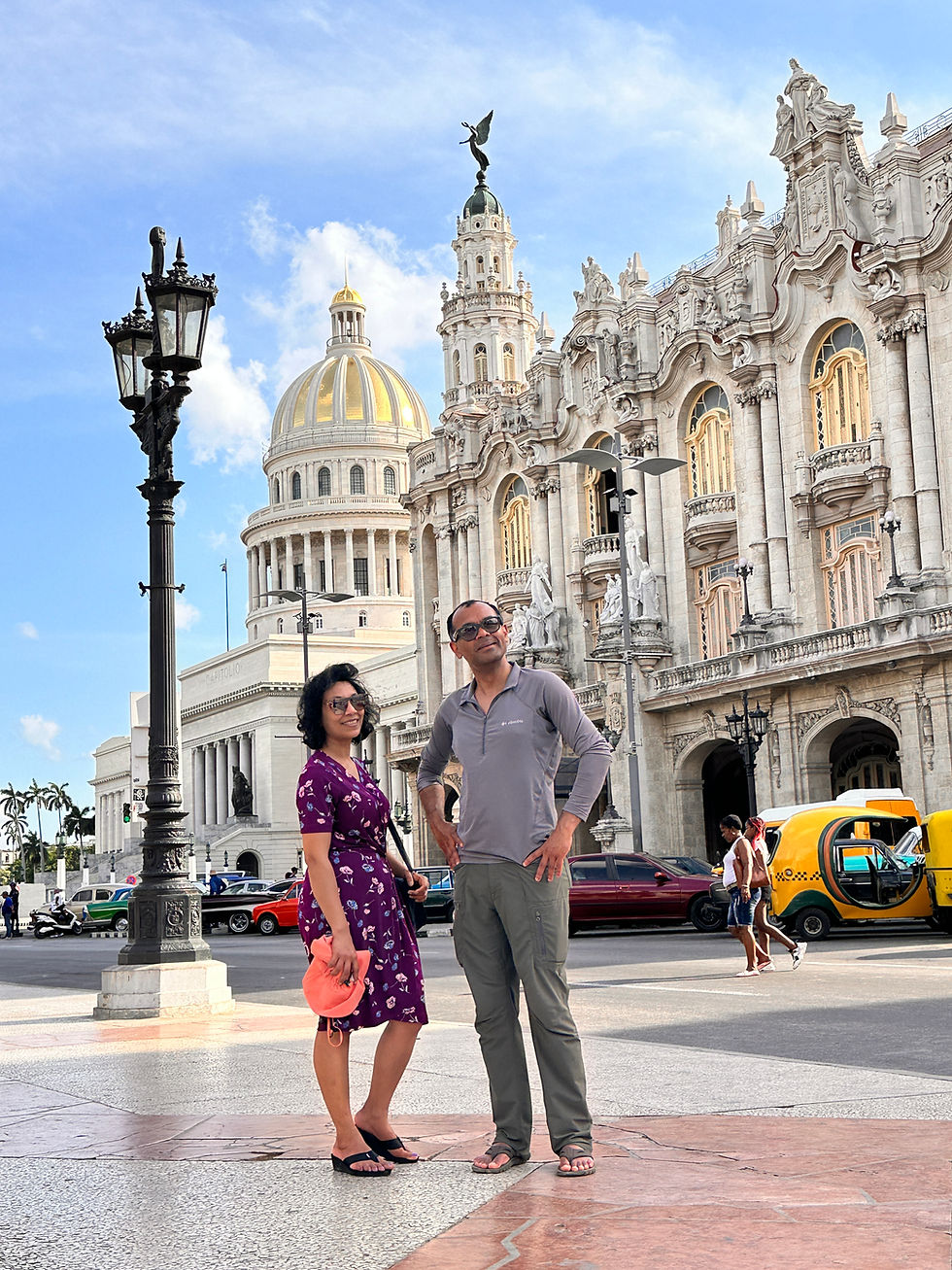Cuba: The Island That Changed How We See a Revolution
- Travelograph Partsunknown
- Aug 13
- 3 min read

We are Bahar & Sarmin, a traveling couple who have explored 126 countries together. Some places surprise you with their beauty, others with their history—but Cuba? Cuba forced us to question a global icon.
When most of the world sees Che Guevara as a fearless revolutionary and a symbol of freedom, our visit to Cuba gave us a very different perspective. Walking the streets of Havana, seeing his face on murals, t-shirts, and postage stamps, we couldn’t ignore a deeper truth: the revolution he fought for may have inspired many abroad, but here in Cuba, it left behind decades of hardship.
From Privilege to Guerrilla Fighter
Ernesto “Che” Guevara was born in 1928 into an upper-class Argentine family. A medical student with a promising future, his travels through South America in the early 1950s changed him. Witnessing poverty, exploitation, and inequality, he concluded that medicine alone couldn’t solve the problems of the poor—it would take revolution.
In Guatemala and later in Mexico, Che met exiled Cuban revolutionaries, including Fidel Castro. He joined them, and after two years of guerrilla warfare, they overthrew the U.S.-backed dictator Fulgencio Batista in 1959.

The Brutality Behind the Revolution
History books often skip over this part, but Che’s revolution was not bloodless. Records suggest he personally killed around 100 people and ordered the execution of thousands more—including civilians—anyone who opposed his cause. His methods were so ruthless that even Castro eventually distanced himself, sending Che abroad in the hope that the killings would stop.
Che later became Cuba’s finance minister and head of the national bank. But when U.S. sanctions hit—most notably stopping sugar imports—his trade missions to Soviet-aligned countries failed to bring relief.
Missiles, Miscalculations, and Misery
In 1961, the Bay of Pigs invasion failed to oust Castro. Soon after, Che pushed for Soviet nuclear missiles to be stationed in Cuba. This nearly triggered nuclear war during the Cuban Missile Crisis, a decision that put ordinary Cubans directly in the crossfire of Cold War superpowers.
Che’s arrogance became clear in his own words: “If Cuba had control of the missiles, we would have fired them at the USA.” It’s one thing to fight for ideals; it’s another to gamble with the lives of millions.
He also persecuted the LGBT community, leaving no place for them in his vision of Cuba. Eventually, Che turned against the Soviet Union too, accusing it of being “capitalist in disguise,” further straining Cuba’s only lifeline.

The End of the Journey
Che resigned from his Cuban positions, renounced his honorary citizenship, and set out to spread revolution elsewhere. He failed in Congo, then entered Bolivia under a false name. There, he failed to gain local support and was hunted down with CIA assistance.
Captured in October 1967, he was executed at age 39. His death, ironically, made him a global symbol of rebellion—a martyr to some, a ruthless militant to others. His remains were hidden for decades before being returned to Cuba in 1997, now buried in Santa Clara, where he once claimed military victory.
Cuba Today
Che’s dream of change never materialized. For over half a century, Cubans have lived under a government with forced labor camps, censorship, and little personal freedom. Yes, the literacy rate is one of the highest in the world, but many people here still face poverty, limited opportunities, and political repression.
As we stood in Revolution Square, looking at the giant steel outline of Che’s face, we asked ourselves: should revolutions be judged by their ideals—or by their outcomes?

Che was brave, determined, and unafraid to fight. But he was also arrogant, uncompromising, and willing to sacrifice innocent lives for his cause. Millions of Cubans have paid the price for that cause, and many still do.
Traveling through Cuba opened our eyes: sometimes history’s heroes are far more complicated than their posters suggest.

Comments